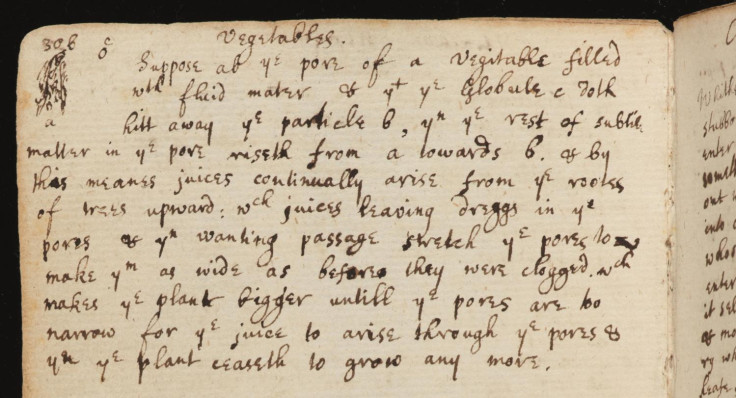Isaac Newton understood how water defies gravity in plants 200 years before botanists

A new study says that the great 17<sup>th century scientist Sir Isaac Newton was not only ahead of his time in his contributions to mathematics, science and mechanics, but that he also made a key observation about plants at least 200 years before botanists did.
Newton (1642-1726) was an English physicist and mathematician who is one of the most influential scientists of all time. During his lifetime, he formulated the laws of motion and universal gravitation, laid the foundations for classical mechanics, and contributed to the development of optics and calculus.
Dr David Beerling, a professor of paleoclimatology at the University of Sheffield's Department of Animal and Plant Sciences, has discovered half a page of text relating to plant function in a notebook that Newton used during his undergraduate days at Cambridge University.
His study, entitled Newton and the Ascent of Water in Plants, is published in the journal Nature.
Transpiration, first proposed in 1895, is the process of water movement through a plant, whereby moisture is carried from the roots of a plant up to small pores on the underside of its leaves, where the moisture then changes into vapour and evaporates into the atmosphere.
Newton describes a very similar process in his notebook, which would have been written between 1661 and 1665:
Suppose a b the pore of a Vegitable filled with fluid mater & that the Globule c doth hitt away the particle b, then the rest of subtile matter in the pores riseth from a towards b & by this meanes juices continually arise up from the roots of trees upward leaving dreggs in the pores & then wanting passage stretch the pores to make them as wide as before they were clogged. which makes the plant bigger untill the pores are too narow for the juice to arise through the pores & then the plant ceaseth to grow any more.
"In modern terms what's apparently being described is the evaporative escape of water from a shoot – transpiration – driven by energy from the sun," writes Beerling in his paper.
Beerling thinks that Newton's use of the word "pores" might actually refer to water-conducting tissues inside stems, rather than the underside of leaves.
Pore-like structures were only detected by an early microscope by Marcello Malpighi who published the treatise Anatome plantarum in 1675, years after Newton wrote in the notebook and before Newton built the first reflecting telescope in 1668.
However, it is not clear exactly how much Newton knew about botany.
"We have no idea how long Newton spent thinking about the workings of plants or what prompted these thoughts," writes Beerling.
"Reclusive and secretive, it's doubtful he gained botanical inspiration from conversations with others at Cambridge University interested in plants."
© Copyright IBTimes 2025. All rights reserved.






















